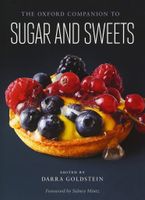Advertisement
Confections to Impress
Published 2015
Confections were beautiful in their own right. In Italy, during the Renaissance, wealthy noblemen sometimes provided spectacular displays of intricate sugar sculptures known as trionfi to celebrate festivals or great events. Medieval feasts in England could also involve elaborate sugar work, presented as “sotleties” between courses to impress, amuse, and flatter the guests. See sugar sculpture.
In sixteenth- and seventeenth-century England, making confections became a fashionable, creative pastime for aristocratic English women, alongside the more practical aspects of making up medicines. They perfumed and colored pastillage, then made it into striped or marbled lozenges to sweeten the breath, or shaped it as their fancy took them into gloves, shoes, keys, and numerous other ornamental items. Sugar syrup, boiled to a point at which it would candy, was molded into animal or fruit shapes, as was marchpane (marzipan), which was also made into large, decorated disks for celebrations such as the wedding feast. The women gathered fruit from their gardens and orchards and preserved it with sugar; made marmalade and fruit paste, which could be rolled into long strings and worked into complex knots; tried their hand at panning comfits; and distilled flower waters as well as more powerful alcoholic drinks. See flower waters and fruit pastes. They sometimes also made Savoy biscuits, other rich sweet cakes, wafers, macarons, and gingerbread.


